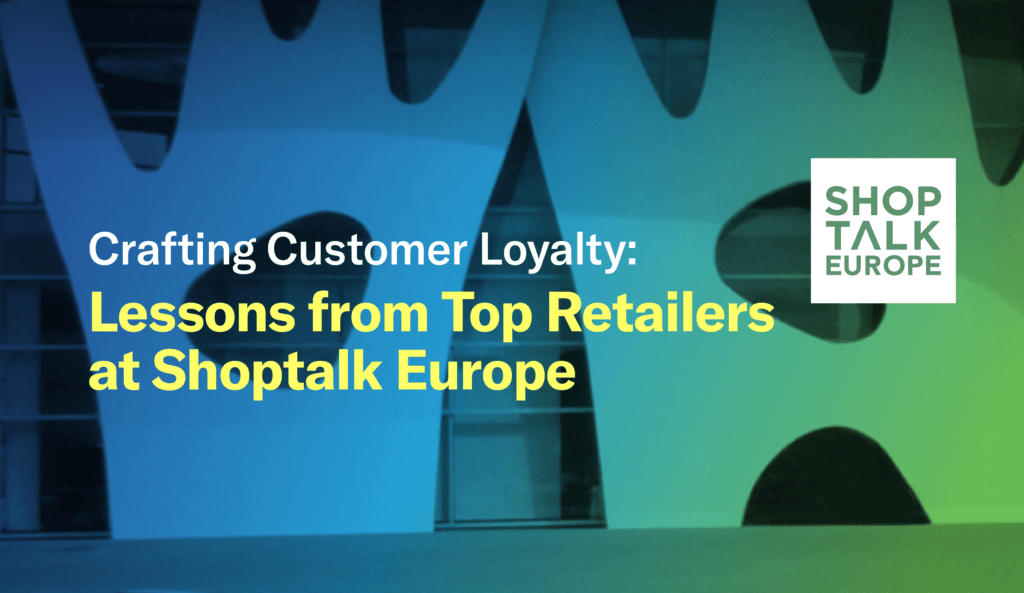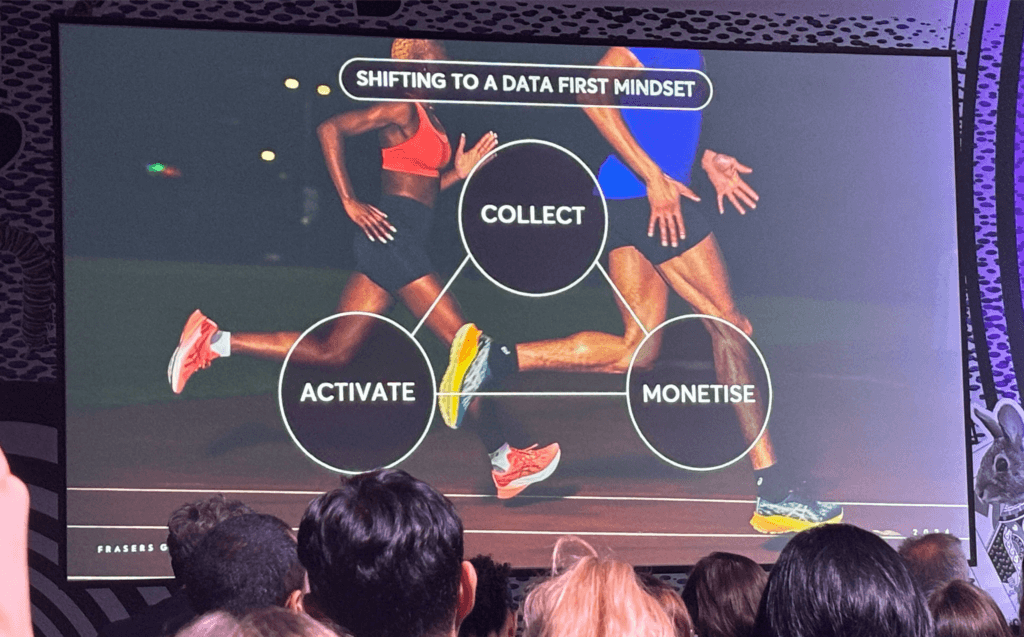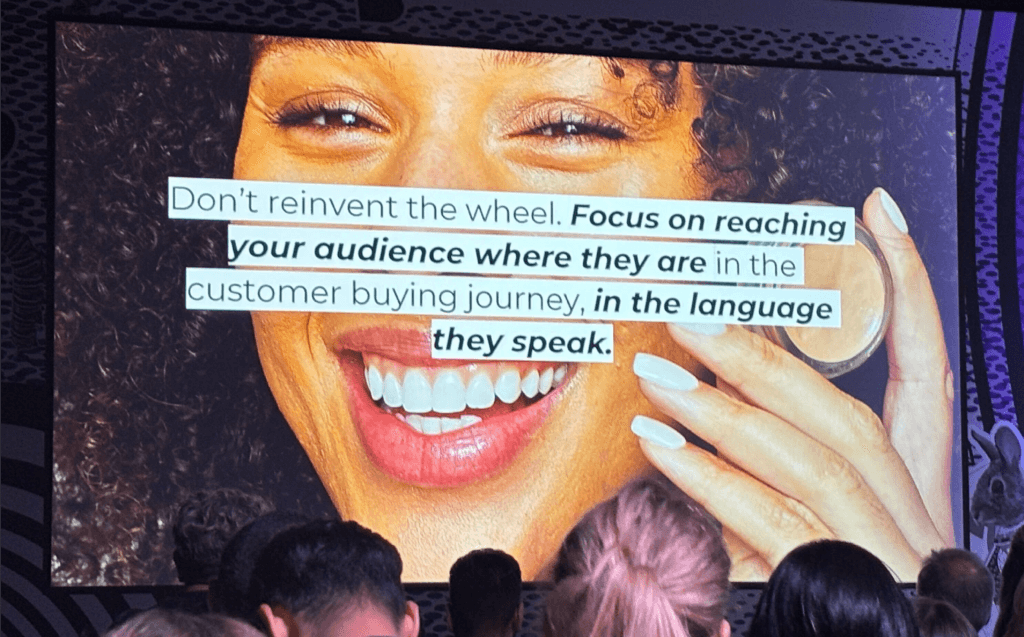Crafting Customer Loyalty: Lessons from Top Retailers at Shoptalk Europe

Ana Williams Global Director, Growth Marketing

Share to my network
In this article
Categories
Book a meeting
Connect with our team of experts to discuss your conversion and loyalty goals, and how we can help you achieve them faster.
Get a demoBrands agree that cultivating customer loyalty is crucial for maintaining a predictable income rather than just relying on acquiring new customers. However, many brands have yet to master a strategy that builds relationships with existing customers and grows the number of new loyal customers. In an engaging session at Shoptalk Europe, three retailers shared their success stories and approaches to building loyalty that other companies can learn from. Key highlights below demonstrate how these retailers leverage customer data, personalization and new digital offerings to redefine loyalty, and how they continually find innovative ways to encourage, reward and retain customers.
Frasers Group: Digital Transformation and a Data-First Approach
For Frasers Group, one of the most successful UK-founded retail groups for sports, premium and luxury brands, including Sports Direct, House of Fraser, Evans Cycles, Jack Wills, USA Pro and Sofa.com, its approach to loyalty began with digital transformation. By implementing a base layer of technology across the business to better collect data and automate systems in a unified manner and shifting the company culture and mindset towards agility and customer-centricity, Frasers significantly improved their customer experience. This journey included enhanced product deliverability, cross-channel personalization and the ability to drive experiences relevant to customers based on location.
To achieve this data-first mindset, David Clark, Chief Customer Officer at Frasers Group, highlighted the three fundamental principles that govern the company’s use of data, including collecting, activating and monetizing the data.

With the launch of the Frasers Plus Pay product, customers can buy products from brands across the Group while collecting loyalty points they can redeem for personalized offers, thus creating a deeper relationship with the customer across brands within the Group.
Based on the combined benefits of perceived value, installment payments and associated perks, Frasers Group saw a 40% increase in average order value from Frasers Plus Pay members compared to non-members, and 25% of new members shopped across different brands within five months of onboarding.
John Lewis Partnership: Tailoring Loyalty to the Right Tier of Customer Connection
According to Tom Langley, Head of Personalisation & Retail Media at John Lewis Partnership, loyalty can vary significantly depending on the relationship a customer has with the brand. For example, a customer will likely feel a stronger emotional connection with their favorite sports club than with a retailer. Brands must align their loyalty mechanics with the types that customers will likely appreciate and respond well to. For instance, a functional type of loyalty — based on points or subscriptions — can drive behavior for budget supermarkets or cleaning product subscriptions. In contrast, brands with a more emotional connection might find customers engage more deeply with content and community-building activities that foster deeper relationships and make customers feel special or proud to be associated with that brand.

The John Lewis Partnership aligns with “Surprise & Delight” on the loyalty scale, while Waitrose’s often aligns with “Member Benefits.”
According to Tom Langley, having the right loyalty approach should be considered the number one priority for brands, but brands should look at loyalty as part of a broad customer engagement strategy and not just as a mechanics scheme. Furthermore, brands should also look beyond their products and services to provide benefits to their loyal customers. Involving partners and suppliers in the brand’s loyalty program can significantly widen and enrich the value of the offers and rewards provided to their most loyal customers and make them even more likely to stay loyal to that brand.
RMS Beauty: Community-Based Cash Back and Data-Driven Personalization
RMS Beauty, a US-based pioneer of the clean beauty movement, experienced low adoption rates with its first loyalty program before deciding to conduct customer research to develop a better one. According to Alejandra Tenorio, Director of Digital Marketing and Ecommerce, RMS learned that a community-based cash-back program resonated best with their audience. As a result of this research, RMS gathered zero-party data, which they leveraged to tailor offerings and communications.

RMS Beauty utilized methods such as surveys, feedback forms and sign-up forms. Combining zero- and first-party data, they used machine learning to predict customer behavior and segment the audience for better targeting. By continuously monitoring performance metrics and customer feedback, RMS Beauty’s loyalty program has remained relevant and resonated well with customers.
Since launching this approach, RMS Beauty has seen impressive results, with a 450% higher loyalty program participation rate and a redemption rate more than 1,000% greater than the industry average.
3 Loyalty Takeaways
Frasers Group, John Lewis Partnership and RMS Beauty took different approaches to growing customer loyalty but shared three common strategies:
- Understand your customers: Develop a loyalty approach based on research into customers’ level of connection to your brand.
- Be personal and relevant: A simple points reward system may not be enough; leverage customer data to tailor rewards that resonate best with various customer segments.
- Integrate loyalty across touchpoints: Ensure your loyalty program is present at every stage of the customer journey, whether on your website, mobile app, store, social media, or events; this seamless integration will help customers easily benefit from your loyalty program and maintain their engagement with your brand.